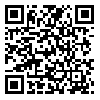1. Ganey PE, Roth RA. Concurrent inflammation as a determinant of susceptibility to toxicity from xenobiotic agents. Toxicol 2001;169:195-208. [
DOI:10.1016/S0300-483X(01)00523-6]
2. Laskin DL, Laskin JD. Role of macrophages and inflammatory mediators in chemically induced toxicity. Toxicol 2001;160:111-8. [
DOI:10.1016/S0300-483X(00)00437-6]
3. Barton CC, Barton EX, Ganey PE, Kunkel SL, Roth RA. Bacterial lipopolysaccharide enhances aflatoxin B1 hepatotoxicity in rats by a mechanism that depends on tumor necrosis factor α. Hepatol 2001;33(1):66-73. [
DOI:10.1053/jhep.2001.20643]
4. Luyendyk JP, Shores KC, Ganey PE, Roth RA. Bacterial lipopolysaccharide exposure alters aflatoxin B1 hepatotoxicity: benchmark dose analysis for markers of liver injury. Toxicol Sci 2002;68:220-5. [
DOI:10.1093/toxsci/68.1.220]
5. Luster MI, Simeonova PP, Gallucci RM, Bruccoleri A, Blazka ME, Yucesoy B. Role of inflammation in chemical-induced hepatotoxicity. Toxicol Lett 2001;120(1):317-21. [
DOI:10.1016/S0378-4274(01)00284-3]
6. Mehvar R, Zhang X. Development and application of an isolated perfused rat liver model to study the stimulation and inhibition of tumor necrosis factor-α production ex vivo. Pharm Res 2002;19(1):47-53. [
DOI:10.1023/A:1013603331899]
7. Moon E-Y, Rhee D-K, Pyo S. In vitro suppressive effect of aflatoxin B 1 on murine peritoneal macrophage functions. Toxicol 1999;133(2):171-9. [
DOI:10.1016/S0300-483X(99)00023-2]
8. Meissonnier GM, Pinton P, Laffitte J, Cossalter A-M, Gong YY, Wild CP, et al. Immunotoxicity of aflatoxin B1: impairment of the cell-mediated response to vaccine antigen and modulation of cytokine expression. Toxicol Appl Pharmacol 2008;231:142-9. [
DOI:10.1016/j.taap.2008.04.004]
9. Stretch GL, Nation RL, Evans AM, Milne RW. Organ perfusion techniques in drug development. Drug Dev Res 1999;46:292-301.
https://doi.org/10.1002/(SICI)1098-2299(199903/04)46:3/4<292::AID-DDR15>3.0.CO;2-4 [
DOI:10.1002/(SICI)1098-2299(199903/04)46:3/43.0.CO;2-4]
10. Bessems M, Tolba R, Doorschodt B, Leuvenink H, Ploeg R, Minor T, et al. The isolated perfused rat liver: standardization of a time-honoured model. Lab Anim 2006;40:236-46. [
DOI:10.1258/002367706777611460]
11. Wolkoff AW, Johansen KL, Goeser T. The isolated perfused rat liver: preparation and application. Anal Biochem 1987;167:1-14. [
DOI:10.1016/0003-2697(87)90127-8]
12. Esterbauer H, Cheeseman KH. Determination of aldehydic lipid peroxidation products: malonaldehyde and 4-hydroxynonenal. Methods Enzymol 1990;186:407-21. [
DOI:10.1016/0076-6879(90)86134-H]
13. Kuo C-H, Hook JB. Depletion of renal glutathione content and nephrotoxicity of cephaloridine in rabbits, rats, and mice. Toxicol Appl Pharmacol 1982;63(2):292-302. [
DOI:10.1016/0041-008X(82)90052-7]
14. Bradford MM. A rapid and sensitive method for the quantitation of microgram quantities of protein utilizing the principle of protein-dye binding. Anal Biochem 1976;72(1-2):248-54. [
DOI:10.1016/0003-2697(76)90527-3]
15. Yokoyama H, Horie T, Awazu S. Naproxen-induced oxidative stress in the isolated perfused rat liver. Chem-Biol Interact 2006;160(2):150-8. [
DOI:10.1016/j.cbi.2006.01.003]
16. Deters M, Siegers C-P, Strubelt O. Influence of glycine on the damage induced in isolated perfused rat liver by five hepatotoxic agents. Toxicol 1998;128:63-72. [
DOI:10.1016/S0300-483X(98)00048-1]
17. Alexandrova A, Kebis A, Mišľanová C, Kukan M. Copper impairs biliary epithelial cells and induces protein oxidation and oxidative DNA damage in the isolated perfused rat liver. Exp Toxicol Pathol 2007;58:255-61. [
DOI:10.1016/j.etp.2006.09.001]
18. Unger PD, Mehendale HM, Hayes AW. Hepatic uptake and disposition of aflatoxin B 1 in isolated perfused rat liver. Toxicol Appl Pharmacol 1977;41:523-34. [
DOI:10.1016/S0041-008X(77)80007-0]
19. Strubelt O. Comparative studies on the toxicity of mercury, cadmium, and copper toward the isolated perfused rat liver. J Toxicol Environ Health Part A 1996;47:267-83. [
DOI:10.1080/009841096161780]
20. Bruck R, Prigozin H, Krepel Z, Rotenberg P, Shechter Y, Bar‐Meir S. Vanadate inhibits glucose output from isolated perfused rat liver. Hepatol 1991;14:540-4. [
DOI:10.1002/hep.1840140322]
21. Rastogi R, Srivastava AK, Rastogi AK. Long term effect of aflatoxin B1 on lipid peroxidation in rat liver and kidney: effect of picroliv and silymarin. Phytother Res 2001;15:307-10. [
DOI:10.1002/ptr.722]
22. Verma RJ, Mathuria N. Curcumin ameliorates aflatoxin-induced lipid-peroxidation in liver and kidney of mice. Acta Pol Pharm 2008;65:195-202.
23. Yener Z, Celik I, Ilhan F, Bal R. Effects of Urtica dioica L. seed on lipid peroxidation, antioxidants and liver pathology in aflatoxin-induced tissue injury in rats. Food Chem Toxicol 2009;47:418-24. [
DOI:10.1016/j.fct.2008.11.031]
24. Shen H-M, Shi C-Y, Lee H-P, Ong C-N. Aflatoxin B 1-induced lipid peroxidation in rat liver. Toxicol Appl Pharmacol 1994;127:145-50. [
DOI:10.1006/taap.1994.1148]
25. Yee SB, Hanumegowda UM, Hotchkiss JA, Ganey PE, Roth RA. Role of neutrophils in the synergistic liver injury from monocrotaline and bacterial lipopolysaccharide exposure. Toxicol Sci 2003;72:43-56. [
DOI:10.1093/toxsci/kfg019]
26. Epstein FH, Luster AD. Chemokines-chemotactic cytokines that mediate inflammation. N Engl J Med 1998;338:436-45. [
DOI:10.1056/NEJM199802123380706]
27. Moulin F, Copple BL, Ganey PE, Roth RA. Hepatic and extrahepatic factors critical for liver injury during lipopolysaccharide exposure. Am J Physiol-Gastrointest Liver Physiol 2001;281:G1423-G31. [
DOI:10.1152/ajpgi.2001.281.6.G1423]









































 , Hamid Staji2
, Hamid Staji2 
 , Farzad Hayati3
, Farzad Hayati3 
 , Mahmoud Ghazi-Khansari4
, Mahmoud Ghazi-Khansari4 
 , Reza Jamshidi5
, Reza Jamshidi5 
 , Ebrahim Shahroozian *
, Ebrahim Shahroozian * 
 6
6





